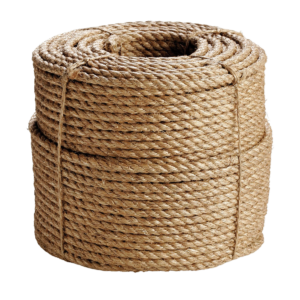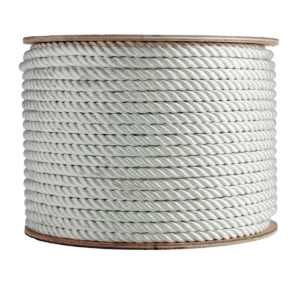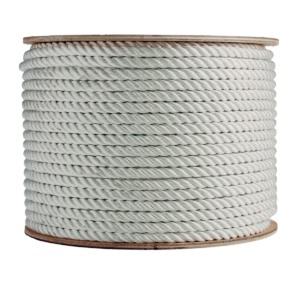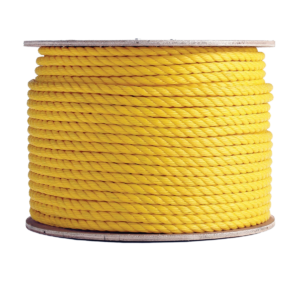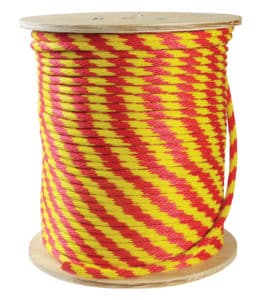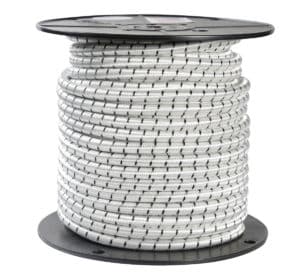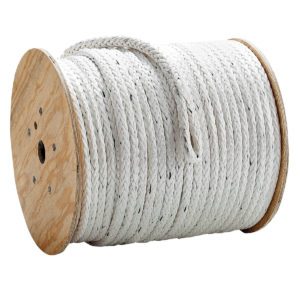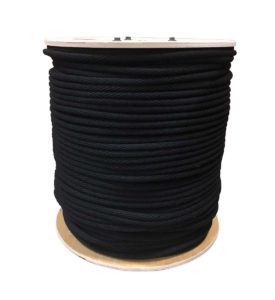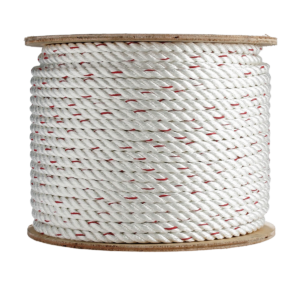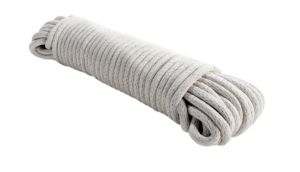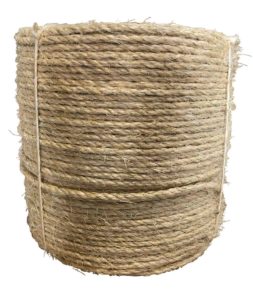Rope Material
Manila (Abaca Fiber)
Abaca Fiber is the strongest of all natural fibers. Native to the Philippines, it is known in the Western world as Manila or Hemp Rope. Originally used for making ropes and twines, it now mainly used for specialized paper product, tea bags, and bank notes. Demand for synthetic fiber ropes has grown rapidly over the years, but manila ropes are still in high demand.
Nylon
Nylon is the most common fiber used in rope manufacturing today. Nylon has a high break strength, as well as high elongation, allowing it to absorb shock loads. Nylon fiber also has a high resistance to abrasion. It is also resistant to rot, mildew and is not affected by oil, and gasoline.
Polyester
Polyester Fibers were first produced in the United States by DuPont in 1946. Polyester fiber characteristics are that they have low stretch and offer excellent UV resistance. Similar in appearance to Nylon fiber ropes, polyester ropes have excellent resistance to surface abrasion, and are rot and mildew resistant.
Polypropylene
Phillips Petroleum first polymerized propylene in 1951. An economical light weight fiber, that is resistant to rot, mildew, marine growth, and petroleum products. Fibers are also UV stabilized for outdoor use, and it is a floating rope. Polypropylene ropes are the most common general purpose rope used today.
Multi-Filament Polypropylene
Multifilament polypropylene fiber is manufactured from prime grade polypropylene resin, with a top quality spin finish. Fiber is ultra violet stabilized for increased sunlight resistance. Finished ropes are soft, highly flexible and come in a variety of colors or color combinations. Most common ropes are solid braid multifilament polypropylene construction.
Rubber
White & Black silicone rubber is used in the core of elastic cords (Bungee Cord). Multiple rubber strands are braided over with multifilament polypropylene, nylon, polyester and cotton fibers to create a high quality elastic cord.
UHMWPE
UHMWPE fiber is 10 times stronger than steel wire. Very low creep and stretch characteristic with 3.5% elongation at break on finished rope. Also gives a 25% reduction in the coefficient of friction and has a very high strength to weight ration. Finished ropes are 2 ½ times stronger than traditional polyester ropes.
Spun Polyester
Spun Polyester fiber is best known for its soft hand, and sure grip. Finished rope appears to have a fuzzy finish.
Combination
Combination ropes are manufactured using multiple fibers to construct a single rope. Constructions utilizing multiple fibers rely on the characteristics of each fiber to give the combination rope different attributes. The most common example of a combination rope is a 3 Strand Poly-Dacron.
Cotton
Cotton fiber is a soft fluffy staple fiber that grows around the seed of a cotton plant. Cotton fibers date back to as far as 5000BC. Today China is the largest producer of cotton fiber, with production of cotton in several other countries as well, including the US. Cotton ropes generally are soft to the hand, and easy to handle. Tensile strengths are much lower than other natural fiber ropes. Most common use is for cotton sash cords and cotton tying twines.
Sisal
Sisal Fiber has been used for centuries. It comes from the Henequen cactus plant that grows in the
Yucatan peninsula of Mexico. Sisal fiber is one of the most used natural fibers. An excellent low cost fiber that has 80% of the tensile strength of abaca fiber (manila ropes).

